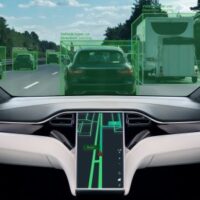Accident Brings Up More Issues Surrounding Autonomous Vehicles

As self-driving or autonomous vehicles start to become more common, many will be asking the same question: what are the legal issues that happen when a self-driving car causes an accident?
Robotaxi Drags Pedestrian
Take for example, a recent case of a robotaxi—essentially, a fully self driving car—in California.
A pedestrian was hit by a separate car, but the impact propelled her body into the path of the robotaxi. The robotaxi struck the woman’s body and then, sensing there had been an impact, pulled over. The problem is that in doing so, the robotaxi was dragging the woman’s body with it, and thus, causing her even more significant injuries.
The woman, thankfully, survived, and the company was fined by the State of California (no lawsuit was filed in the case). But eventually, as these kinds of vehicles become more common, courts will have to deal with the legal issues that surround them.
Who is Liable?
The accident above raises questions of liability, and whether the robotaxi (or the company that owned or programmed it), are even liable at all—it isn’t unreasonable for an automated vehicle to pull over after sensing an impact.
The victim’s family may allege that the vehicle should have sensed it had a person underneath, and immediately stopped. But immediately stopping a vehicle in traffic can also put occupants of that vehicle in danger.
What Cause of Action?
Then there are questions as to what kind of lawsuit a victim would file, when an automated vehicle causes an accident.
If the allegation were to be that the vehicle was incorrectly programmed, the lawsuit would sound more like a product liability claim—that there is a defect in the vehicle’s programming or the way that it reads or responds to the road.
But it could also be negligence, in that, just like a person, the vehicle is making a “decision,” and the wrong one. Or, alternatively, that the vehicle is negligently programmed to behave a certain way in a given situation.
What About the Driver?
Then there is the issue of the human person behind the wheel. Most experts believe that although we may come to a day and age where cars are fully autonomous, even those vehicles will need a human driver behind the wheel, monitoring what the vehicle is doing.
For accident victims, that may mean trying to figure out whether the vehicle was at fault for an accident, or whether the human was at fault for not spotting, reacting to, or trying to avoid, the accident.
And then there are the ethical issues—how do you program a vehicle to make choices? Does a vehicle risk its passengers inside the car, to save people outside the car? How far should a vehicle swerve to avoid an accident, knowing that by doing so, it could be endangering the vehicle’s occupants?
Call the Tampa personal injury lawyers at Barbas, Nunez, Sanders, Butler & Hovsepian for help and to schedule a consultation today for help if you have been injured by any kind of car.
Sources:
reuters.com/legal/transactional/column-driverless-car-problems-are-outpacing-liability-laws-2023-12-11/
cbsnews.com/sanfrancisco/news/nhtsa-robotaxi-cruise-pay-penalty-failing-report-san-francisco-crash-involving-pedestrian/
